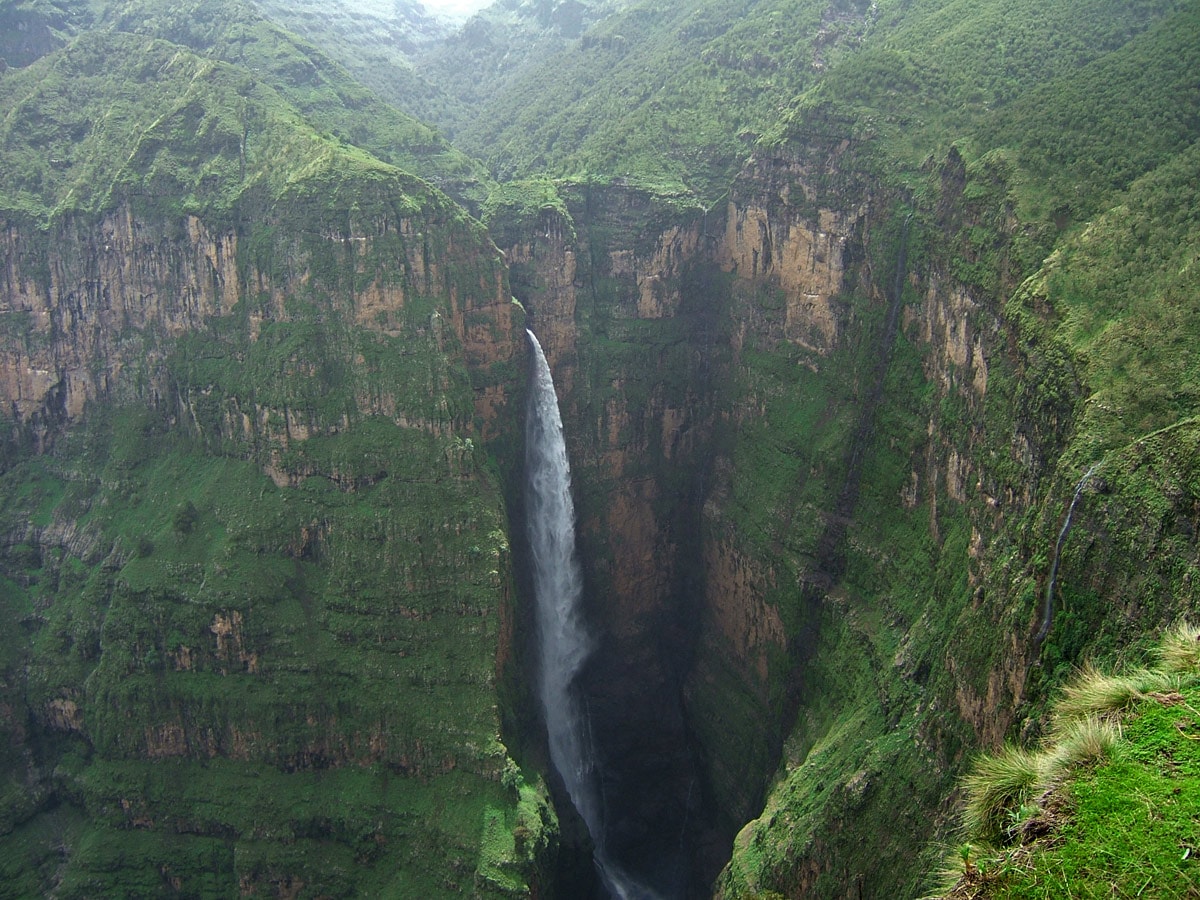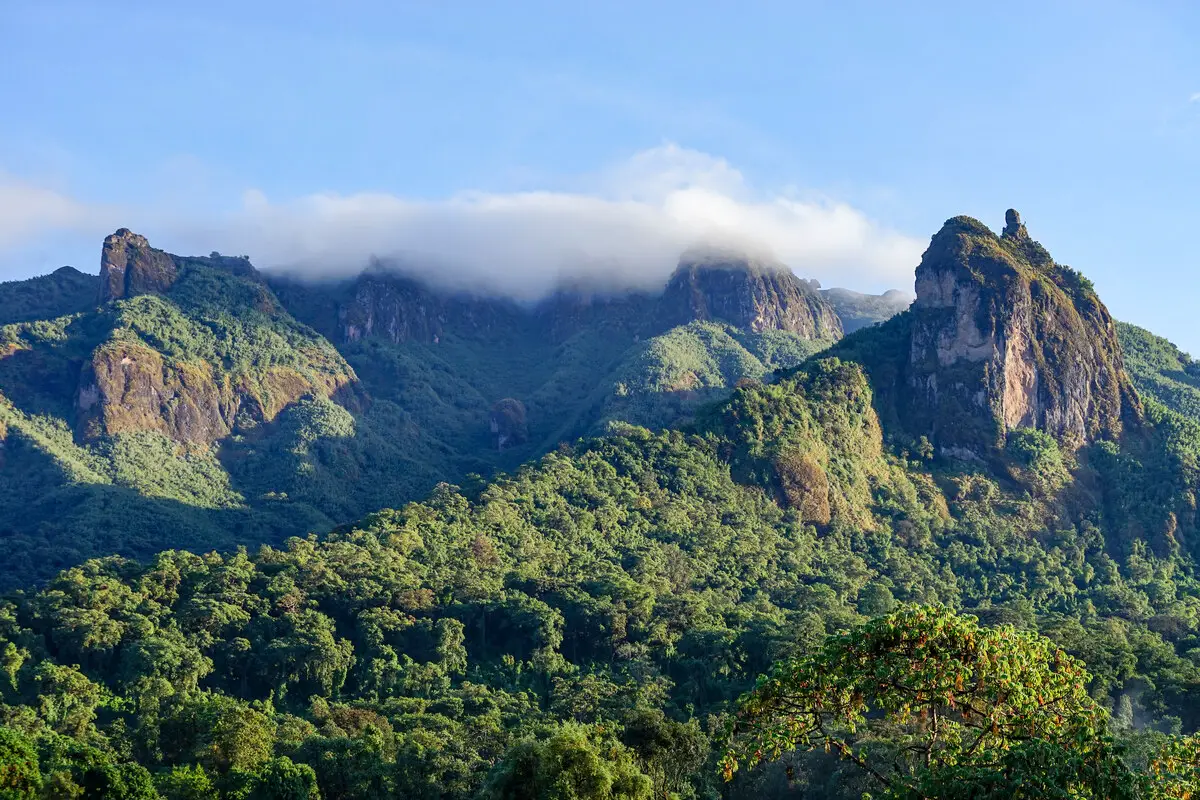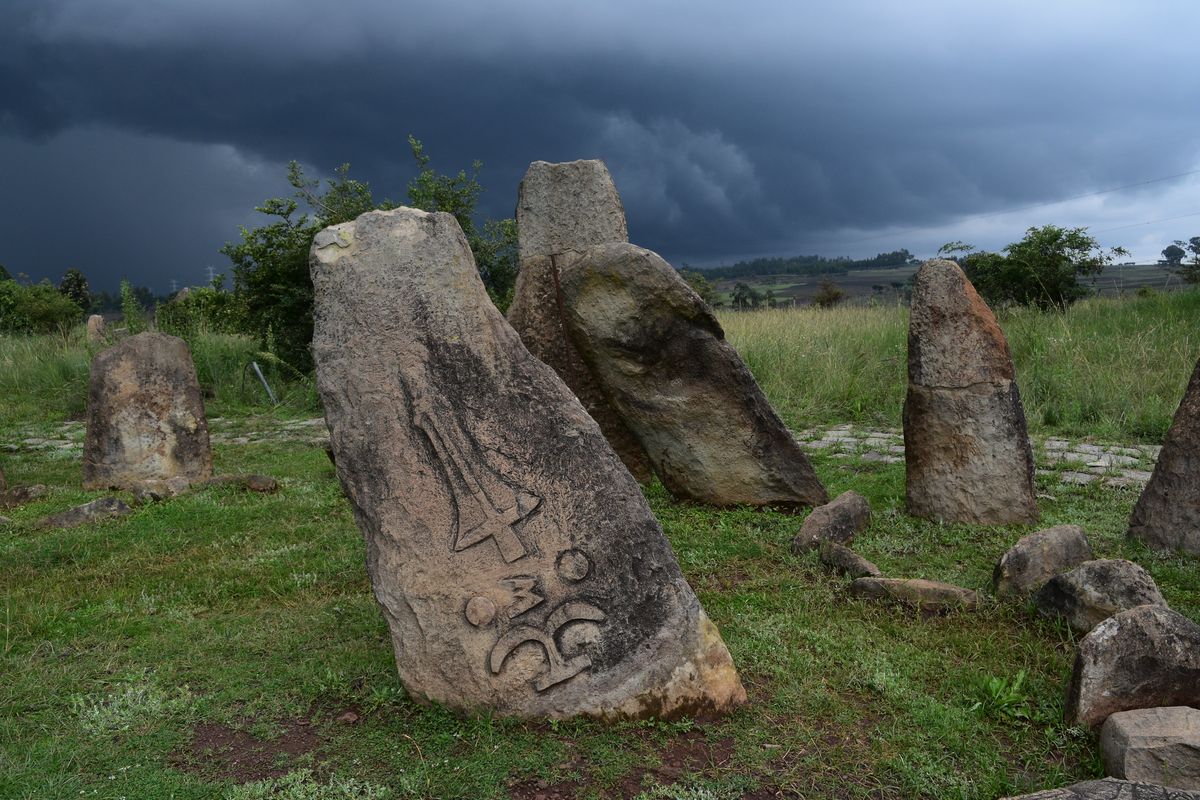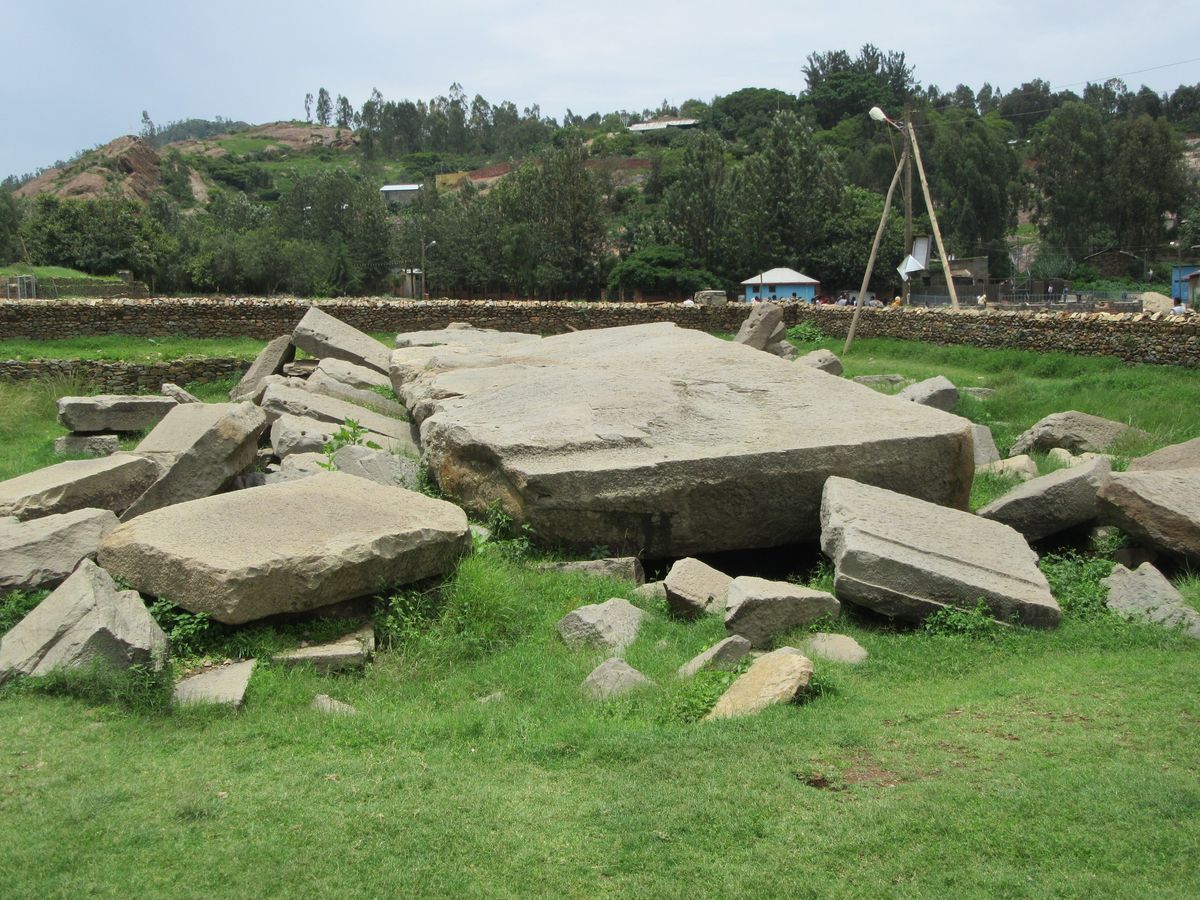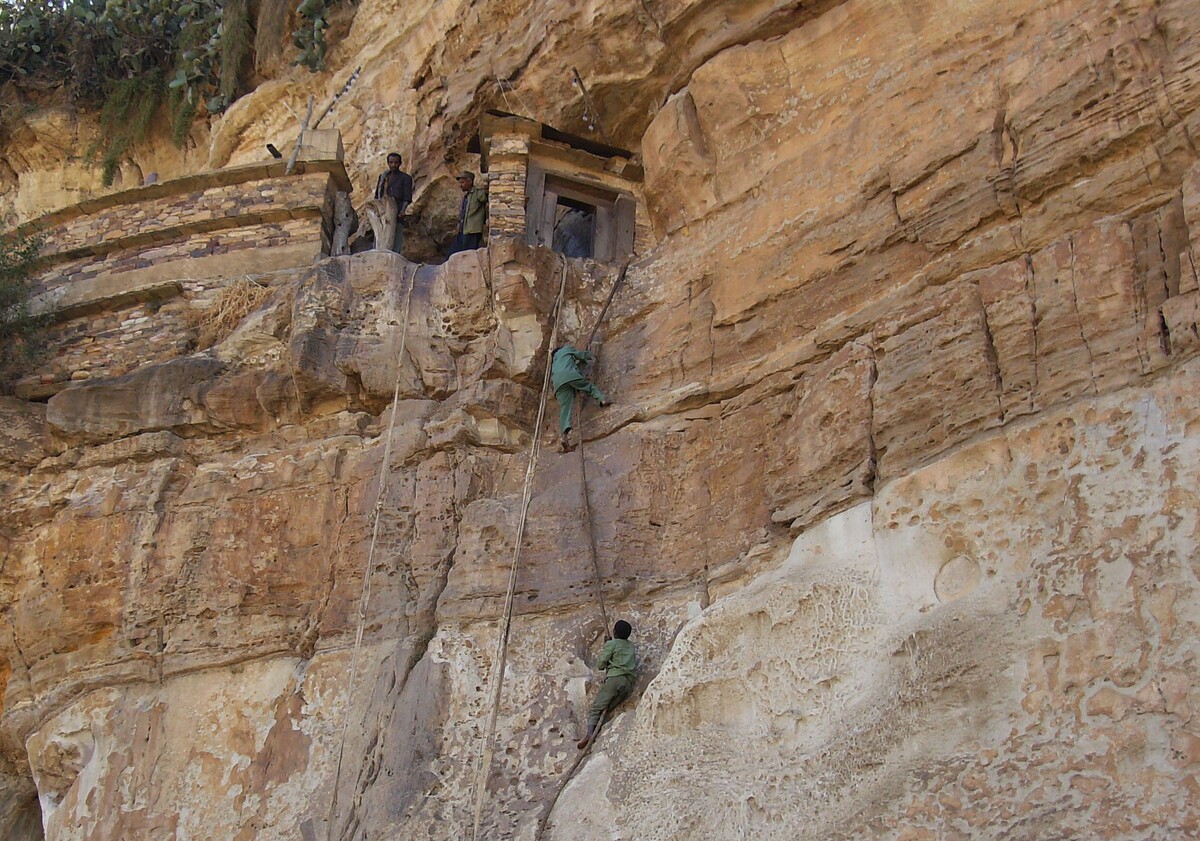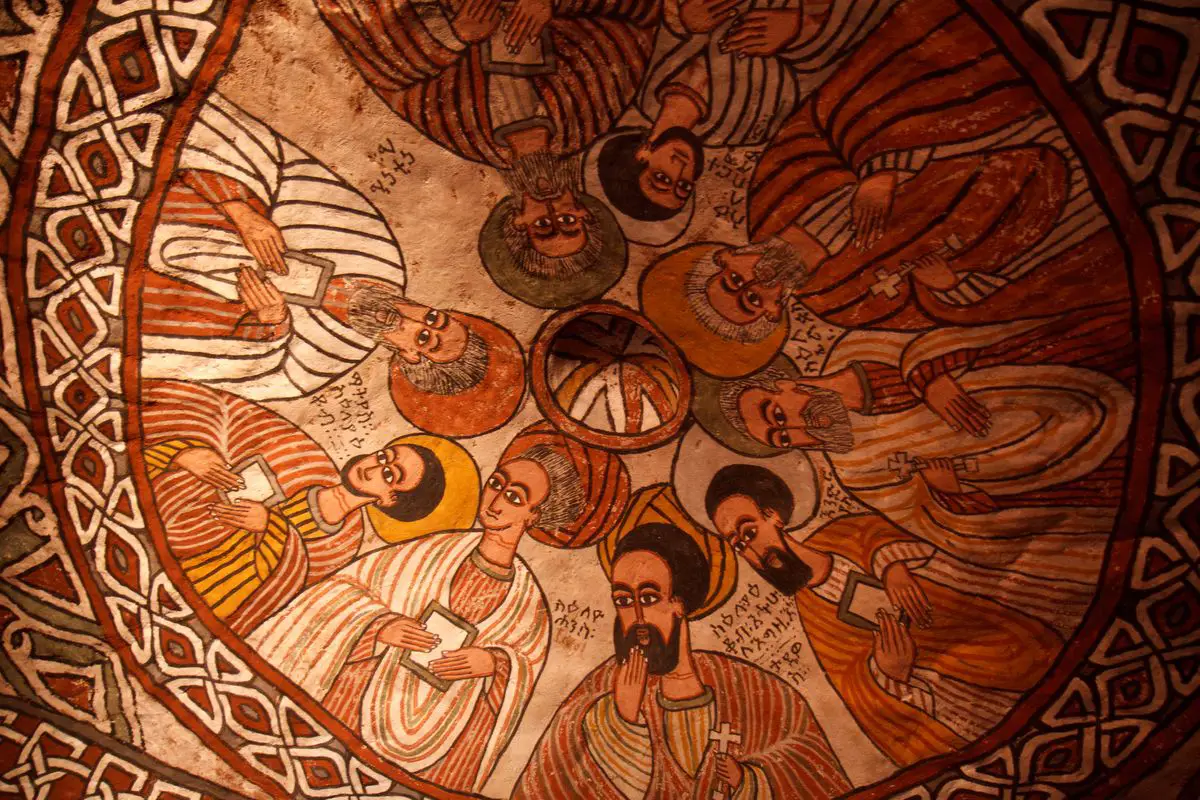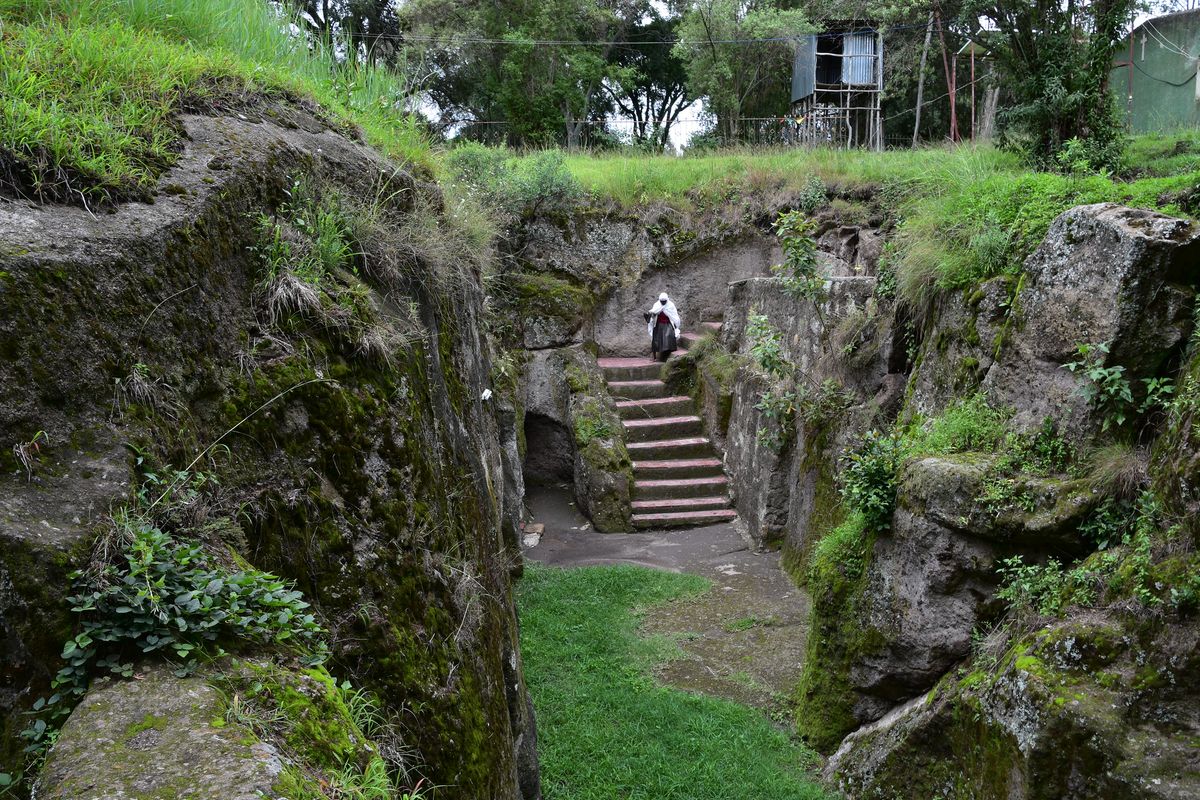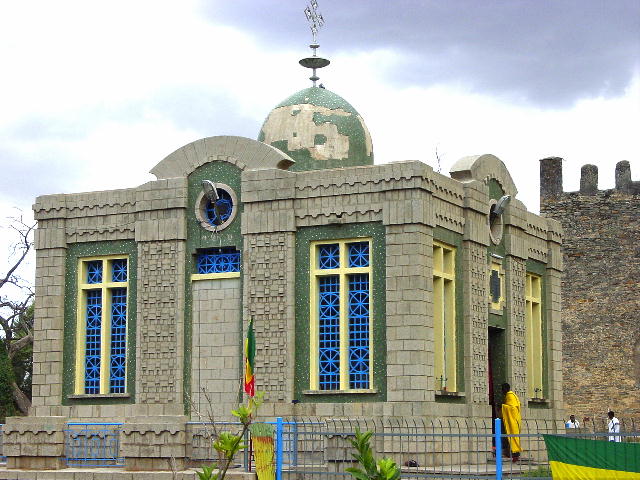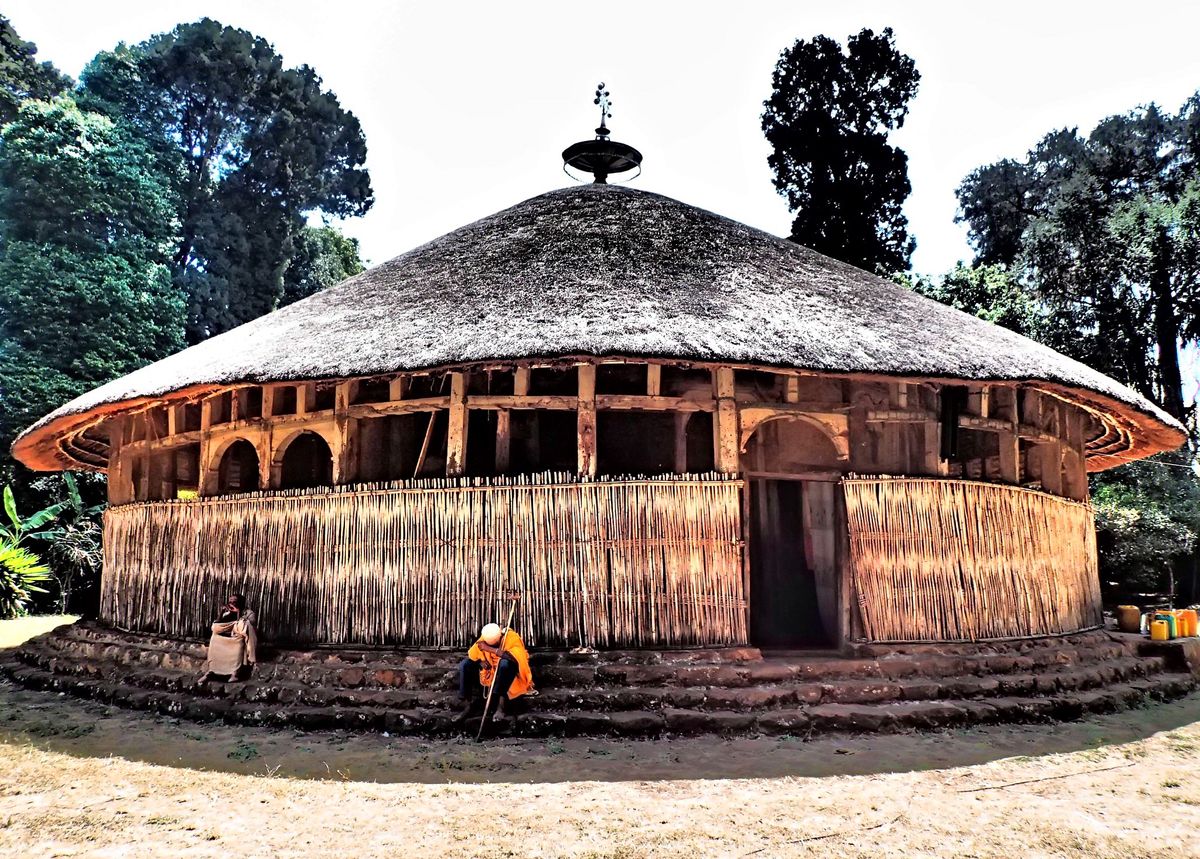Wondermondo 🢖 World 🢖 Wonders of Africa 🢖 Wonders of Ethiopia
Territory
Wonders of Ethiopia
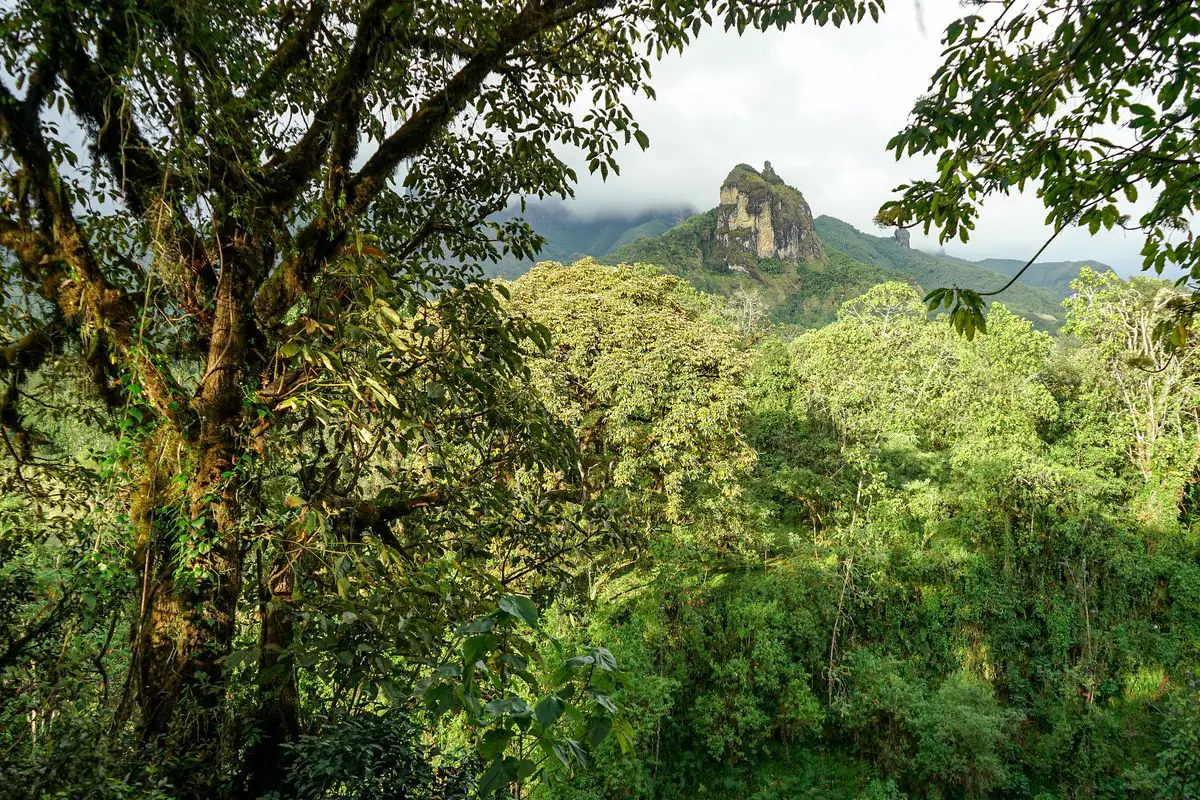
 Highlights
Highlights
Ethiopia is a very interesting country with rich cultural and natural heritage. The most amazing wonders of Ethiopia are:
- Rock-cut churches. Christianity was established in Ethiopia in the 4th century and since then it has inspired a distinct cultural tradition. Monolithic churches, hewn in live rock and adorned with garish frescoes, form a part of this unique cultural tradition. By far the best known monolithic churches are located in Lalibela, but there many more rock-cut churches in the mountains of Ethiopia.
- Ancient stelae and megalithic standing stones. True wonders of the world are stelae of Axum – these monolithic stone obelisks were up to 33 meters high and 520 tonnes heavy. Obelisks were erected in the first centuries AD, but the tradition of the erection of stones goes further in the past. There are thousands of standing stones in diverse locations of Ethiopia, including the southern jungle. The best known are Tiya Stelae – standing stones adorned with mysterious signs and figures and erected in unknown times by unknown people.
Map with the described wonders of Ethiopia
If you see this after your page is loaded completely, leafletJS files are missing.
 Top 25 wonders of Ethiopia
Top 25 wonders of Ethiopia
Geological wonders
Dallol hot springs and geysers
Afar
One of the visually most outstanding places on Earth, the hot springs have a high salt concentration that has shaped terraces and other formations of very bright, unusual colors. Among the hot springs, there is also a salt geyser – possibly the only one in the world.
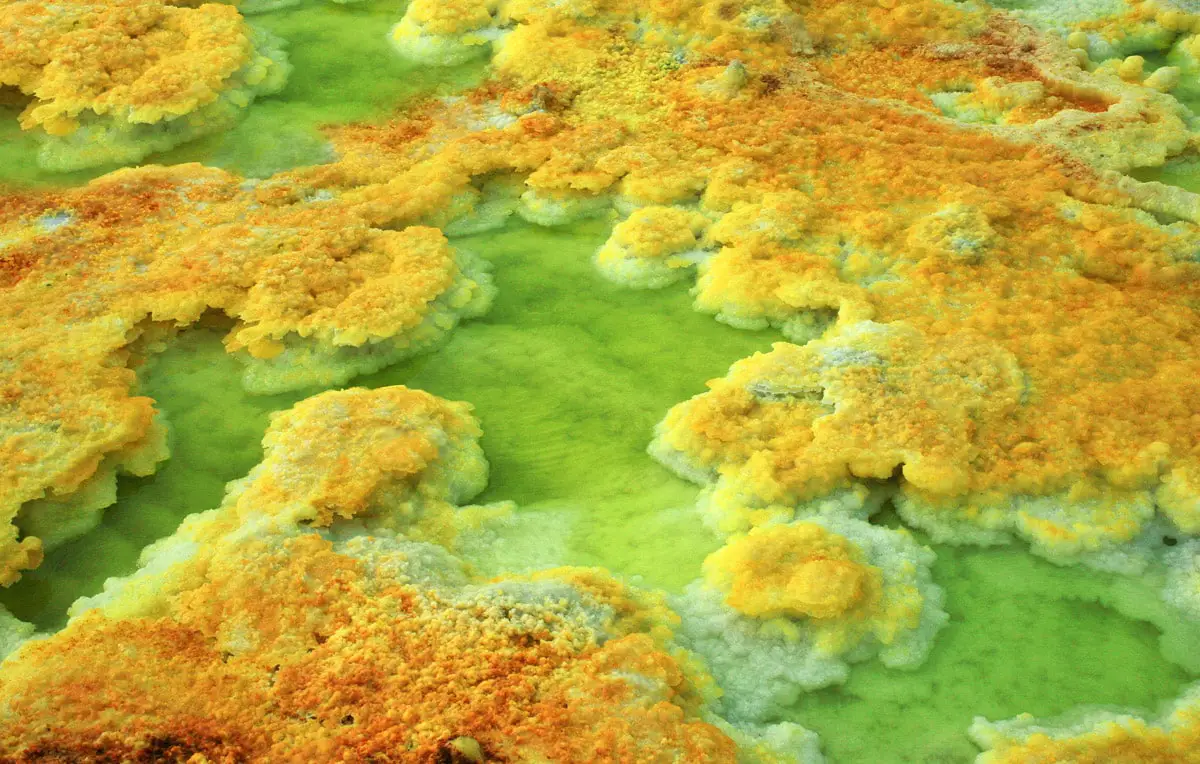
Erta Ale
Afar
One of the most active volcanos in the world, with a constant lava lake (sometimes two lakes) in the crater, known since 1906. None of the other known lava lakes in the world have such a long lifetime.
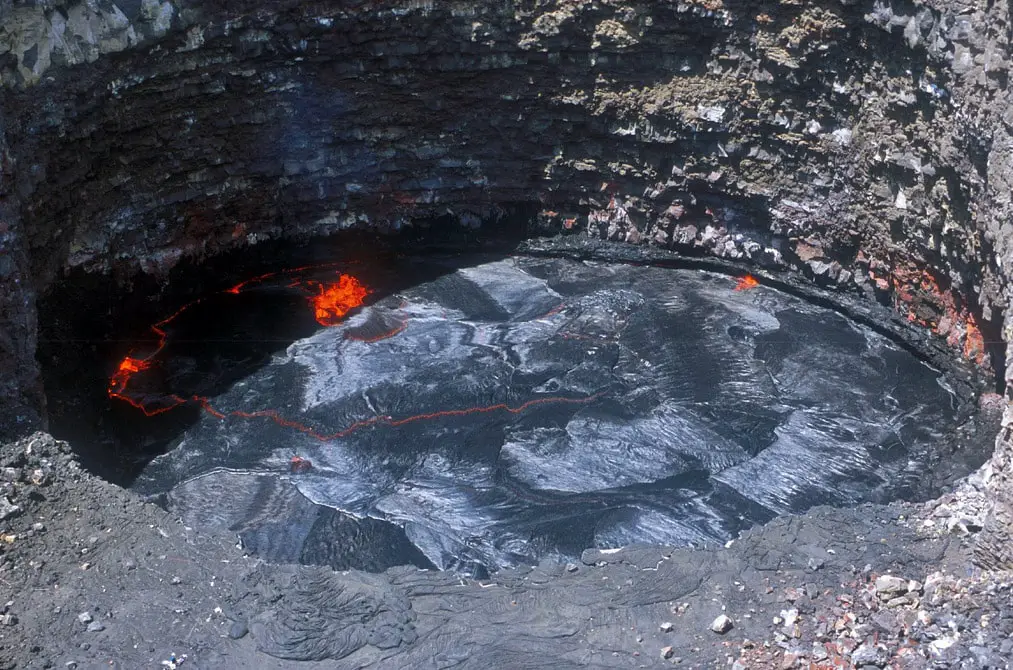
Blue Nile Falls – Tis Abay
Amhara
Enormous waterfall, 37 – 45 m high, up to 400 m wide. Now part of the water is used by hydropower plant.
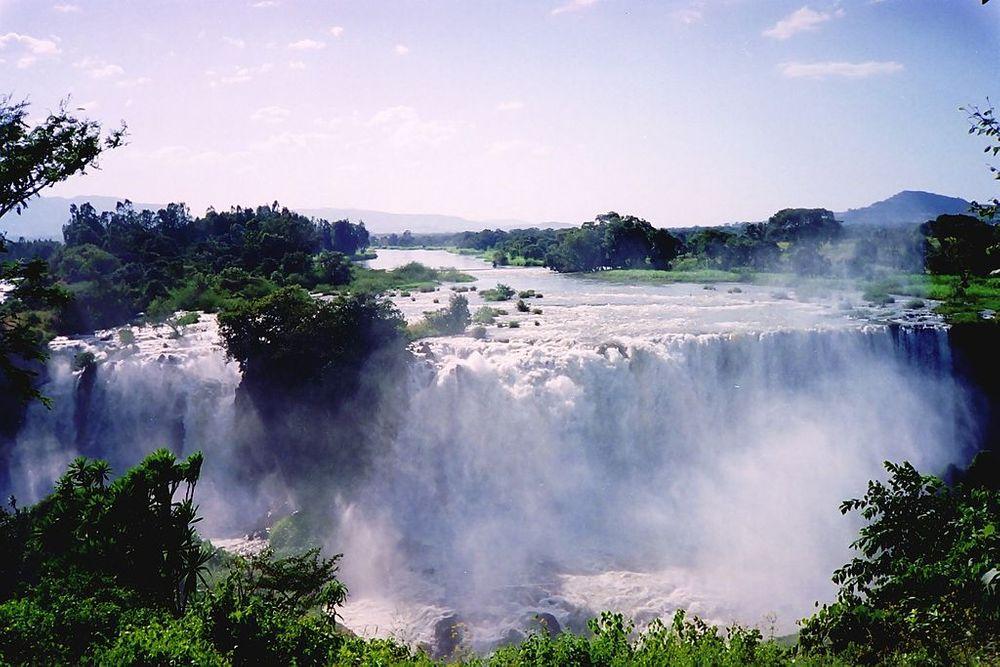
Sof Omar Caves
Oromiya
The longest known cave in Ethiopia, 15.1 km long. A sacred site. The cave can be walked through.
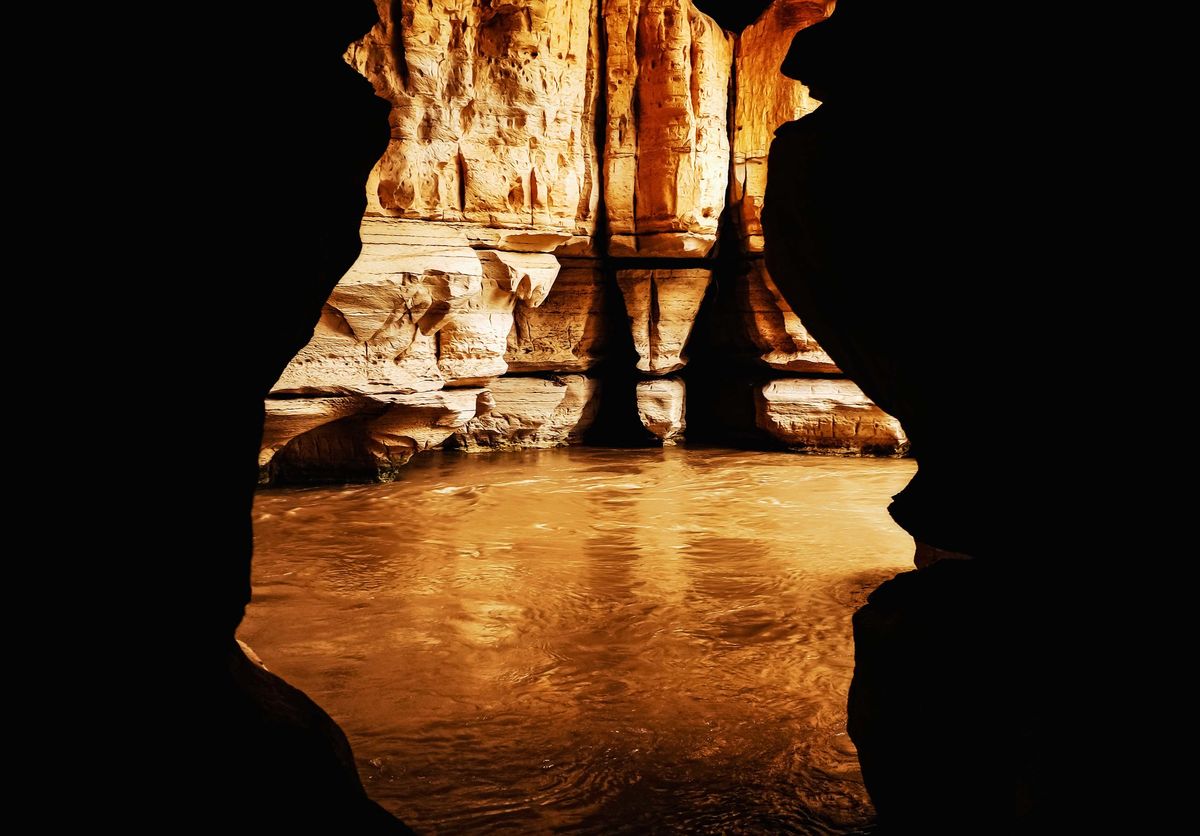
Jinbar Falls
Amhara
Jin Bahir stream falls into a giant, 800 m deep abyss in Simien Mountains. Falls are starting from a deep canyon – thus their height is less than the depth of the abyss but nevertheless – more than 500 m.
Lake Afrera
Afar
Unusual, slightly acidic, hypersaline lake 102 m below sea level. Two endemic species of fish live in the lake. Parts of the lake are covered with a salt layer, there are observed “attacks” of the lake when the salt layer is suddenly raised like a big wave.
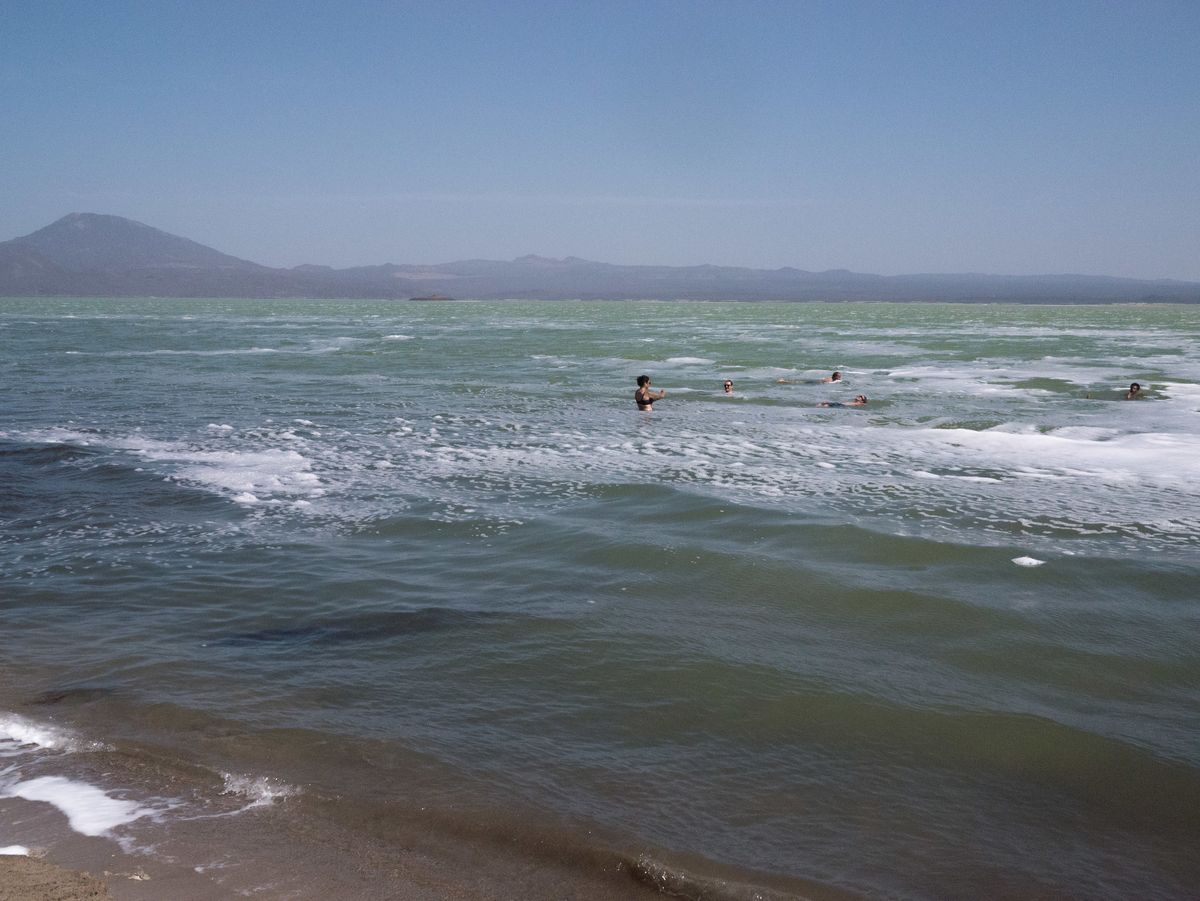
Allalobed geysers and hot springs
Afar
Group of beautiful hot springs. There is also up to 6 m high (sometimes even 30 m), very active geyser.
Biological wonders
Harenna Forest
Oromiya
Unique montane forest, little-explored but as far as is it known – one of the most biodiverse areas in the region. Receives more rain than most areas around as it is located on an enormous southwest-facing slope. Contains natural groves of high-quality coffee.
Gara Muleta cloud forest
Oromiya
Mountain cloud forest island amidst deserts and semi-deserts. One of the most biodiverse places in Ethiopia with 361 species of plants. 45 plants are endemic to Ethiopia. Rich fauna with numerous species of monkeys and other animals. Especially species-rich is the southern side of the mountain.
Archaeological wonders
Tiya Stelae
Southern Nations, Nationalities and People’s Region
A row of 36 standing stones – megaliths. 32 stones are adorned with enigmatic symbols. Most likely here is located burial complex. The age of this ancient Ethiopian culture is not known. There are known some 160 more megalithic sites in the Soddo region.
Axum Northern Stelae Park
Tigray
Hundreds of enormous steles. These monuments were made of single stones and were made around the 4th century AD. Stelae mark the burials of emperors and nobles. The tallest – Obelisk of Axum – is 24 m high. The tallest stele in the past was 33 m tall.
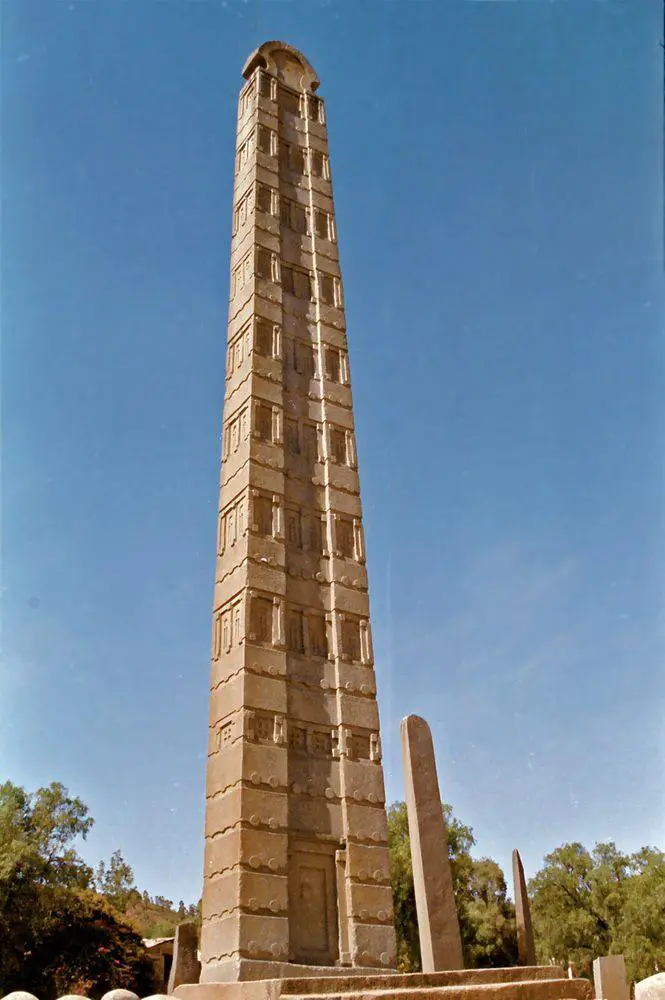
Tutu Fela megalithic stelae
Southern Nations, Nationalities and People’s Region
Enormous megalithic monument with more than 1200 upright stones, marking ancient burials. Many standing stones are formed in phallic forms and adorned with stone carvings.
Tomb of King Bazen
Tigray
Purported tomb of legendary emperor Zäbe’esi Bazén who reigned at the time of Christ. An amazing monolithic structure that has been hewn in solid rock. 16 steps lead down into a hall with four burial chambers.
Nefas Mawcha
Tigray
One of the largest megalithic structures in the world – a dolmen that is 17 x 7 x 1.5 m large and weighs some 360 tons. It served as a roof to an underground complex of tombs.
Architecture wonders of Ethiopia
Lalibela churches
Amhara
11 monolithic Christian churches hewn underground from the cliff in the 13th century.
Debre Damo
Tigray
This monastery from the 6th century is accessible only by rope up a vertical cliff. Here is located the oldest Christian church in Ethiopia (around the 6th century AD), where as construction materials are used obelisks of Axum state.
Abuna Yemata Guh
Tigray
This small and beautiful rock-cut church was made in the 13th century. The church is adorned with beautiful frescoes. One should ascend over a 200 m abyss to enter the church.
Adadi Maryam
Oromiya
A complex of approximately 600 – 700 years old, rock-hewn churches. These are the southernmost ancient Christian rock-cut churches. If compared with churches in Lalibela, these churches are roughly made.
Fasil Ghebbi
Amhara
Fortress – town of the emperor of Ethiopia, built in the 17th century. Now it is in ruins but nevertheless looks very impressive. The architecture of the complex is a unique fusion of Nubian, Arab, and Baroque styles. Includes Fasilides Castle and other buildings.
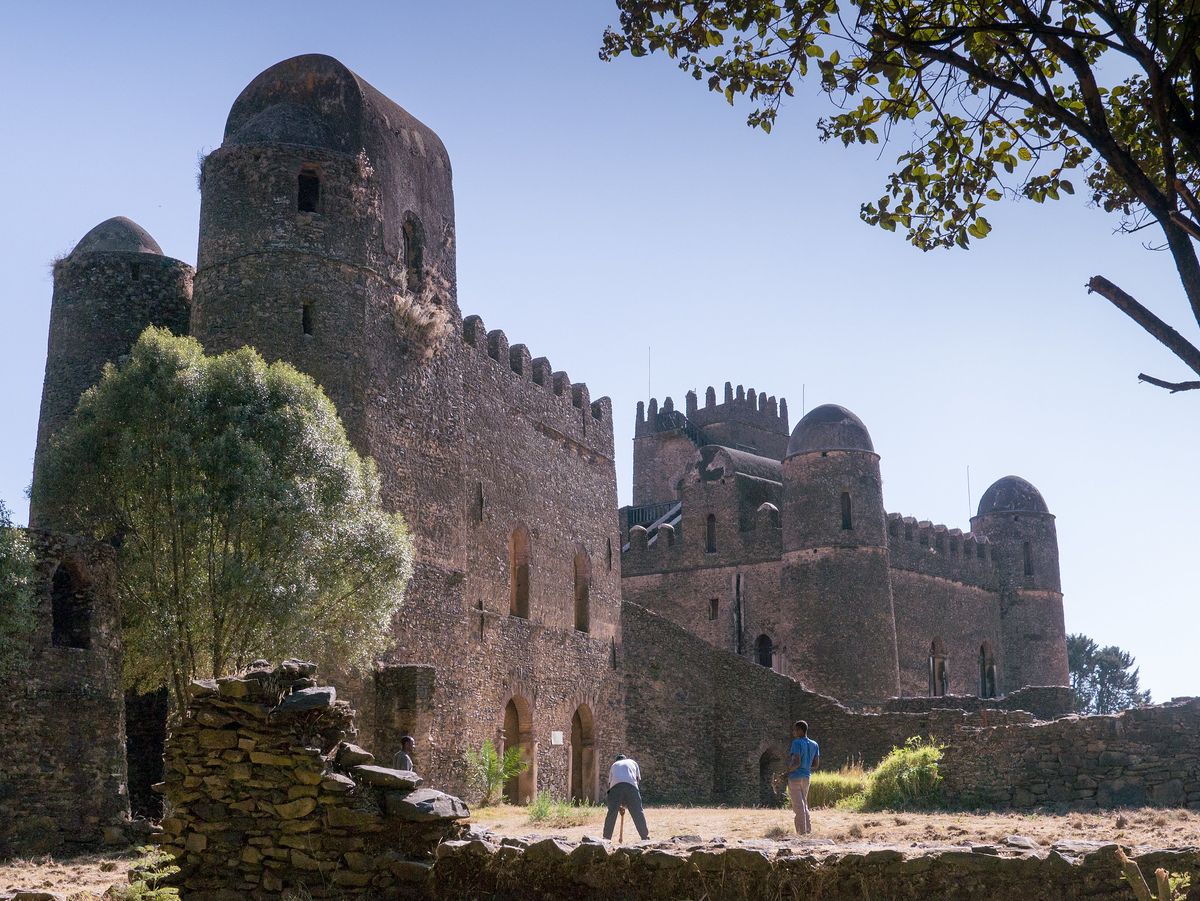
Amba Geshen
Amhara
Isolated, flat-topped mountain surrounded by vertical, high man-made walls. This mountain was used as a prison in the past – there were exiled and left male heirs of Ethiopian Emperors.
Harar Jugol
Harari
A historical center of the once important commercial city, enclosed in a fortification wall. Harar Jugol contains a huge amount of historical architecture including 110 mosques. The city flourished in the 16th century.
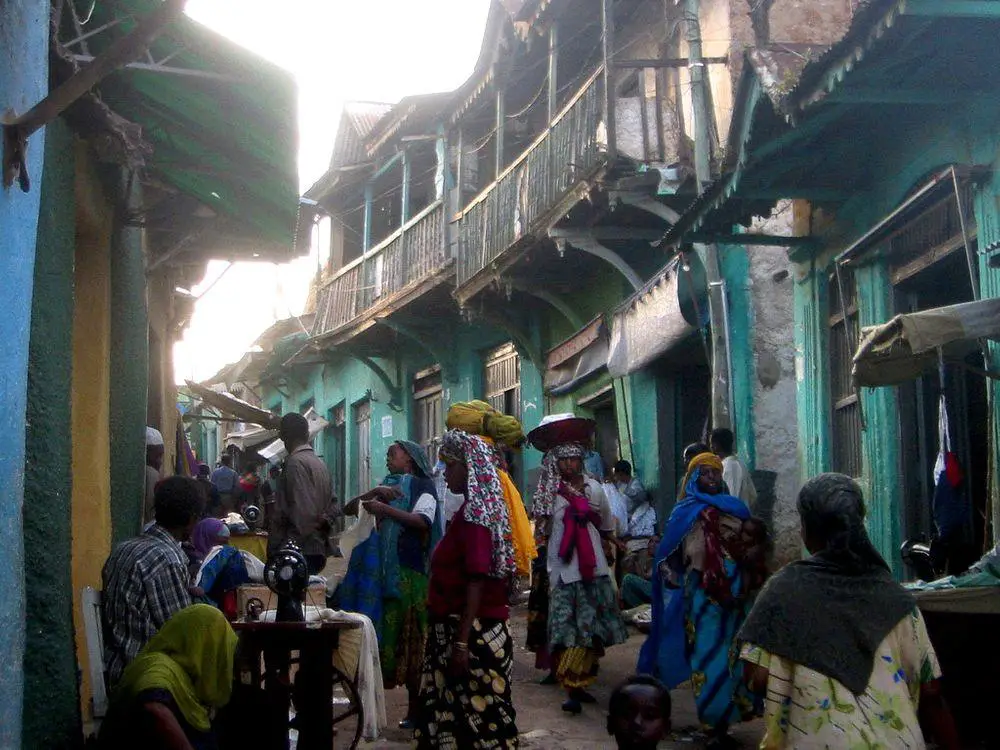
Axum Church of Our Lady Mary of Zion
Tigray
The most important church of the Ethiopian Orthodox Church, a site where Ethiopian emperors were crowned. The first church was built here around the 4th century AD, and the current one – in 1665. According to Ethiopian tradition, this church holds the original Ark of the Covenant.
Debre Tsion Church
Tigray
Mountaintop church, built in the 13th century. The church is hewn in the rock, and adorned with beautiful frescoes.
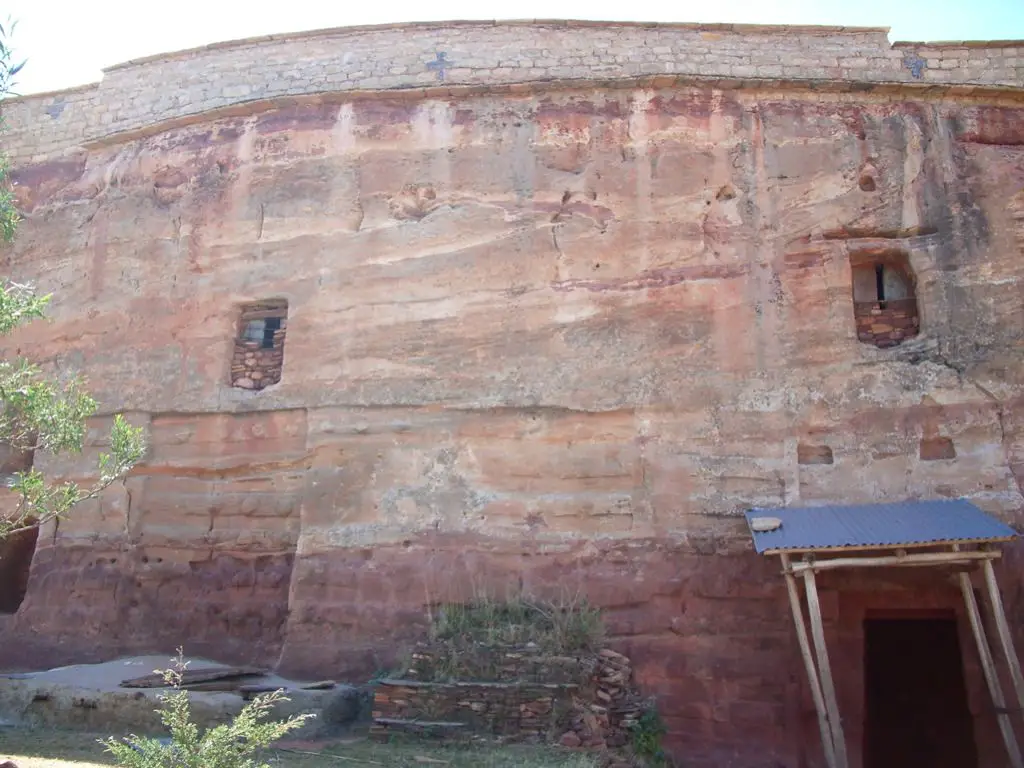
Tana Qirqos
Amhara
Legendary island – there are stories that Ark of the Covenant was hidden on this island for a while – from 400 BC to 400 AD. Then it was moved to Axum.
 Recommended books
Recommended books
Ethiopia (Bradt Travel Guide)
The bestselling guide to Ethiopia in recent years, this fully updated seventh edition of Philip Briggs’ acclaimed guide reveals an ancient country that continues to surpass all expectations: from the ancient Judaic cultures of the fertile highlands to the Animist people of the South Omo Valley, from the Afroalpine moorland of the Bale Mountains National Park to the thundering Blue Nile Falls.
Held at a Distance: A Rediscovery of Ethiopia
This powerful book gives readers a chance to experience Ethiopia through the personal experience of a writer who is both Ethiopian and American. It takes readers beyond headlines and stereotypes to a deeper understanding of the country. This is an absorbing account of the author’s return trip to Ethiopia as an adult, having left the country in exile with her family at age 11.

